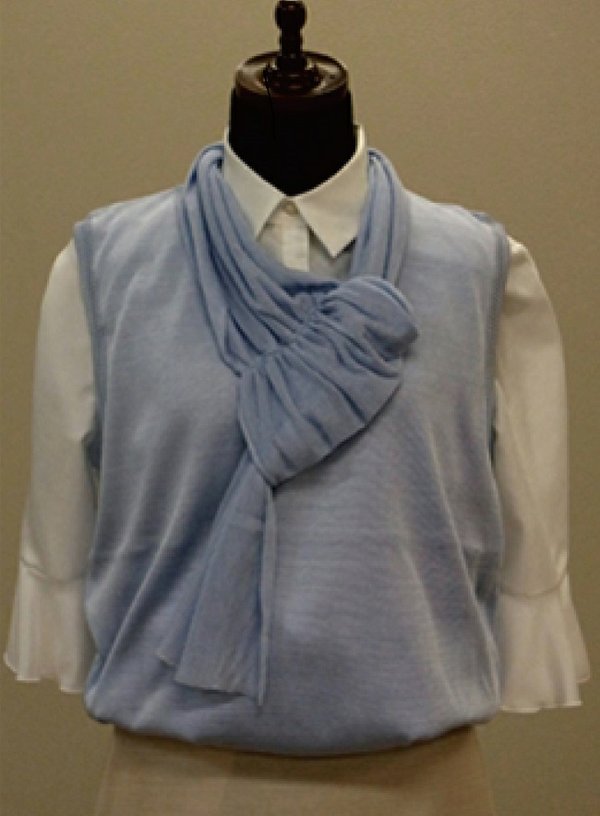Sweater and scarf made from 99.6 percent silkworm silk and 0.4 percent spider silk (photo by Yoshihiko Kuwana et al., PLOS One)
TEXTILE TECH
Along Came a Spider Sweater
If the sweater vest and scarf pictured above were commercially available in the U.S., it would have a fiber content that reads: 99.6 percent silkworm silk, 0.4 percent spider silk.
Researchers at Japan's National Institute of Agrobiological Sciences and Shinshu University made the items from silk from silkworms that had been engineered with spider genes. The silkworm’s silk has less than 1 percent spider proteins, but it’s 53 percent stronger than regular silk, according to a story in Popular Science.
Scientists have long looked at the strength of spider web and there are companies investigating how to turn that material into a commercial or industrial textile. The problem is spiders don’t spin unwrappable cocoons like silkworms do. So the Shunshu U. researchers found a way to clone and embed spider dragline protein genes into a silkworm which created the cocoon made from the hybrid silk.
In addition to pretty lavender sweater vests, the researchers noted, spider silk can be used for “biomedical applications, such as artificial tendons and ligaments, due to the ability to use transgenic technologies to control the tensile properties.”























